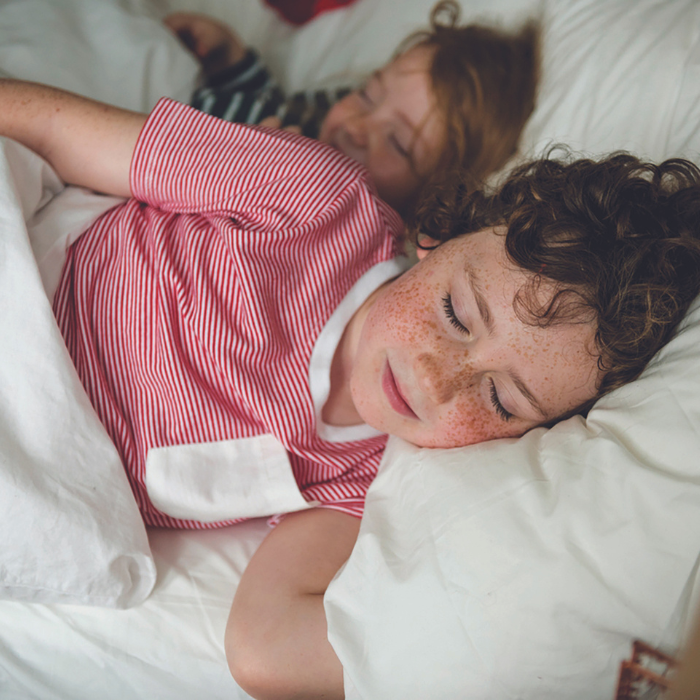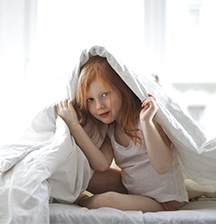
Creating a healthy sleep environment for your child isn’t just about turning off the light at night. Here are some tips to help send your little ones off to slumber more successfully.
HAVE A GOOD ROUTINE
Children thrive with simple, predictable routines that help them feel secure and safe about what is going to happen and how things will go. A simple bedtime routine might include tidying up toys, getting stuff ready for childcare or school tomorrow, taking a bath, putting on pyjamas, brushing hair and teeth, reading a storybook together, turning on the night light, and getting into bed. It’s okay – in fact, it’s preferred – if this routine stays the same every single night. It’s not boring, it’s comforting.
SWITCH OFF SCREENS
Experts say that children should turn off screens and devices at least an hour before bedtime (preferably sooner). Evidence is emerging to suggest that the blue light from screens can disrupt natural melatonin production, but any bright light can interrupt your child’s wind-down-for-sleep process, so soften lights and put the screens away.
ALLERGY ALERT
Dust mites, pet dander, dust and dirt, mould, mildew, and other allergens can cause respiratory problems which, in turn, can disrupt your child’s sleep (not to mention making them very sick). Take a look at their bedroom and consider whether any of these might be in evidence. A thorough spring-clean of your child’s bedroom might be in order, along with getting rid of old pillows, bedding, or soft toys that are beyond saving, looking for allergy-resistant bedding and products like mattress protectors that will protect your child from dust mites and the like, and eradicating mould.
THE LIGHT STUFF
Many people sleep better in rooms that are pitch black, so using blackout curtains are a great idea, particularly if you live in the suburbs with lots of light pollution. A soft night light is a good option for children who might be fearful of the dark.
THE SOUND OF SILENCE
Some children sleep better in a very quiet room, and others need a bit of white noise or gentle sounds to help them drift off. Listening to music or sounds that stimulate Delta wave activity – the brain waves that occur between the frequency of 0.5 and 4Hz which we experience during deep, dreamless sleep – may help children to relax.
SNUG AS A BUG
As weather changes, so too does the bedding our children need to sleep comfortably. Check that your child’s bed has the right sheets and blankets for the season, and extra layers available within easy reach for older children. For babies and toddlers, ensure their bedding is safe and suitable – we love sleeping bags for little ones who like to kick the covers off.








